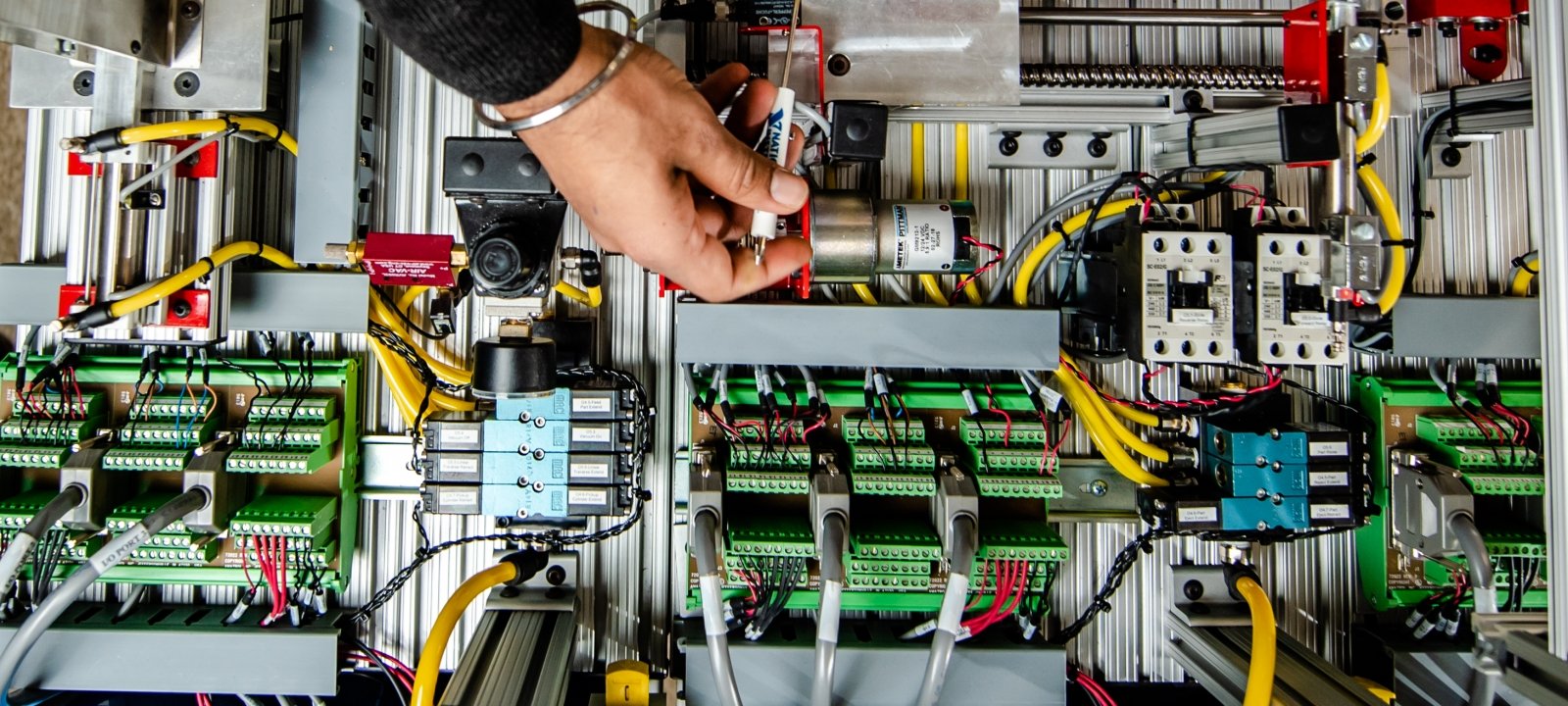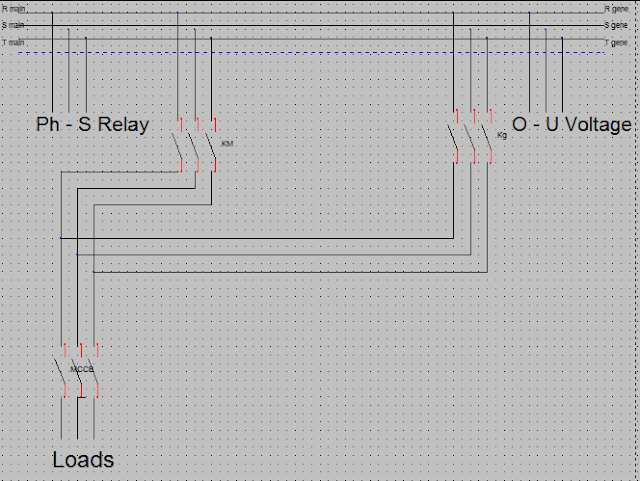Auto Transfer Switch (ATS) function:
It automatically converts between the general electrical supply to the supply of electrical generators such as (diesel - gasoline). It is used in generators with a three-phase output, and it can be used with a single phase and after making simple modifications to the electrical panel, which is used in the buildings and Shops .
The way of work :
It is a selector key with which one of two systems can be selected, either manual or automatic.
Explanation of the Manual system:
It consists of 4 Push Buttons, two of which are divided into one to turn on the electrical transformer and another to operate the general current, and the other two are divided into one to stop the electrical transformer and the other to stop the general current. Instead of the 4 Push Button, a three-level Selector can be used, which is divided into one. To turn on the transformer, the other to turn on the general current, and the third to stop the transformer and the general current together.
Explanation of the automatic system:
Here the conversion process takes place automatically. In the normal state, the loads are fed from the public power supply. In the event of a public power outage or irregularity, the electrical generator is disconnected and connected to carry out the process of feeding the loads. Two points must be noted:
The electric generator is connected to the loads in the event that the general power is disconnected or becomes irregular again.
The electric generator is connected and disconnected after a certain time in the event of a general power disconnection.
Component of ATS :
Two contactors of the same type and current for the two supply sources, and mechanical protection can be installed on them
- Number of MCCB breaker for load protection
- Three on-delay timers, equipped to operate all the time
- 1 over and under voltage relay and another phase sequence and failure relay
- 1 automatic battery charger to charge the battery. Its charging current must be appropriate for the battery and it must have surge protection.
- the current
- 2 relays
- Four signal lights, two green and two red
- Selector switch with three positions to switch between manual and automatic modes
- Two NC push buttons and two NO push buttons
As we see in the figure:
There is Km, which is a contactor of the general current.
There is Kg, which is the contactor of the electric generator.
There is also an O - U Voltage Relay:
It is placed in parallel with the electric generator to verify the value of the voltage coming out of the generator.
There is also a Ph-S Relay:
It performs its function by making sure of the public electrical current and its regularity in the event of an interruption.
Or if it is irregular, it sends a signal to complete the conversion process to the electrical generator current.
MCCB also exists:
It is called a molded case circuit breaker, as it is connected before the load to protect it from a surge in electrical current or a short circuit in both cases.
This part is very important and I would like to focus on:
After the generator is running, it will certainly not be the first time it starts, and it will output a regular voltage, but after a few seconds, the voltage coming out of the generator will be regular, so the O-U Voltage device, that is, over and under voltage relay, closes its open point connected to a relay coil called K2, so the relay works and closes its open point, K2. connected to the selector switch S1, which is in position 1 (i.e. automatic), so the timer coil T3 will operate, and after the time set for this timer has passed (about 10 seconds and depends on the generator’s capacity and type and also on the load capacity), it will close its open point T3 and it will By turning on the contactor coil Kg, the generator is inserted and the load is fed to it.
In the case of the general current:
When the general current returns and becomes regular, the phase sequence and failure relay will close its open point and turn on the relay coil K1. This relay will do the following:
He opens its closed point connected to the generator's operating terminals and disconnects it.
He closes his point connected to the selector switch S1 (which is in position 1) and turns on timers T1 and T2. The timer T1 is set to a time less than T2. The timer T1, after the set time has elapsed, disconnects the contactor Kg, that is, disconnects the generator feed, and the timer T2 turns on after the set time has passed. It has to operate the contactor coil Km and thus enter the general current feed







0 Comments